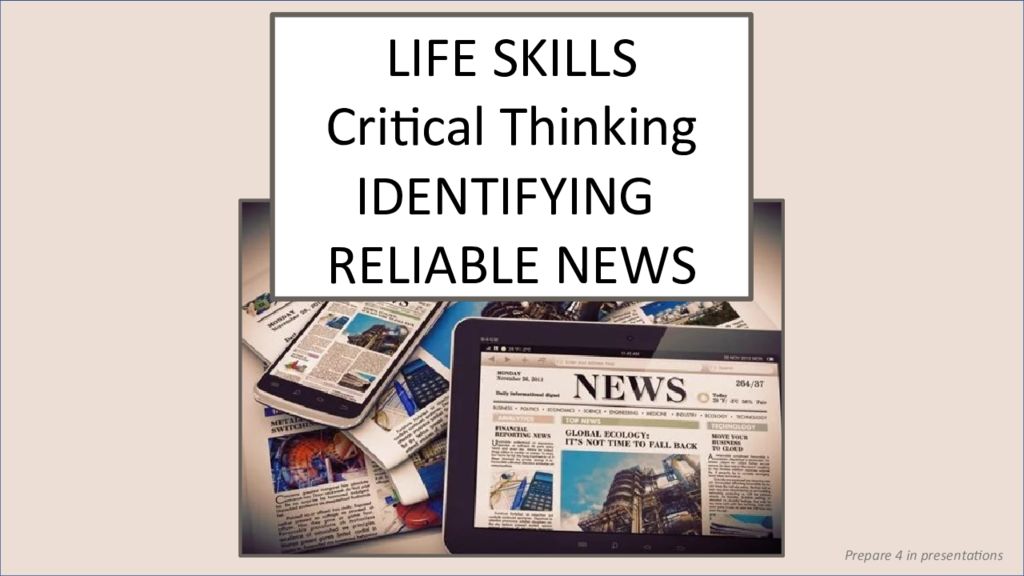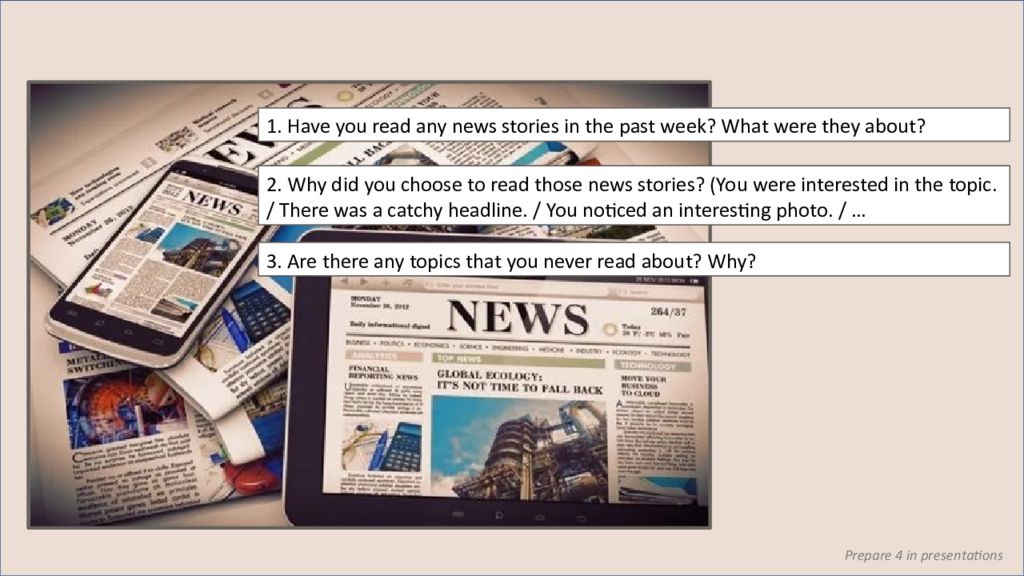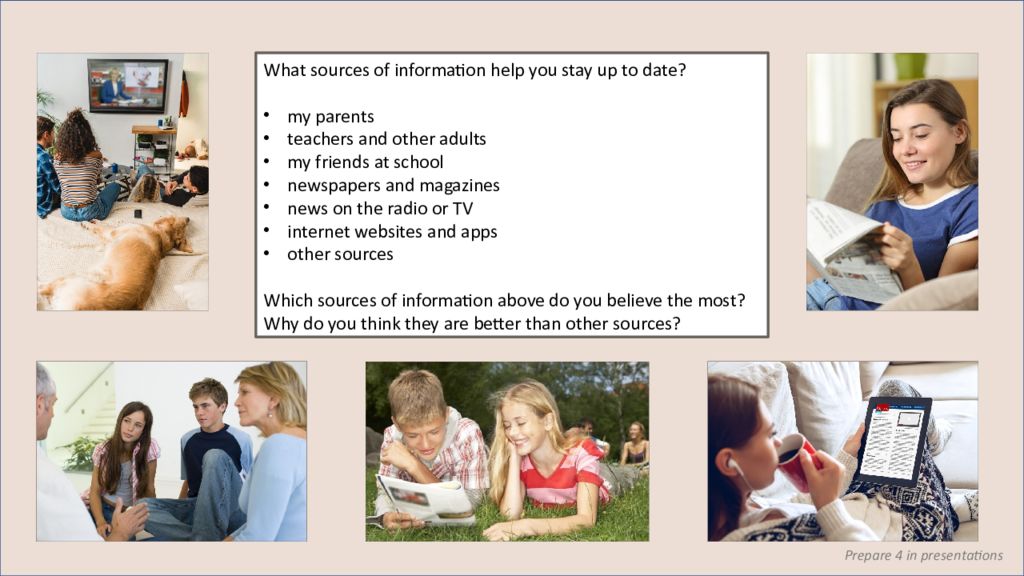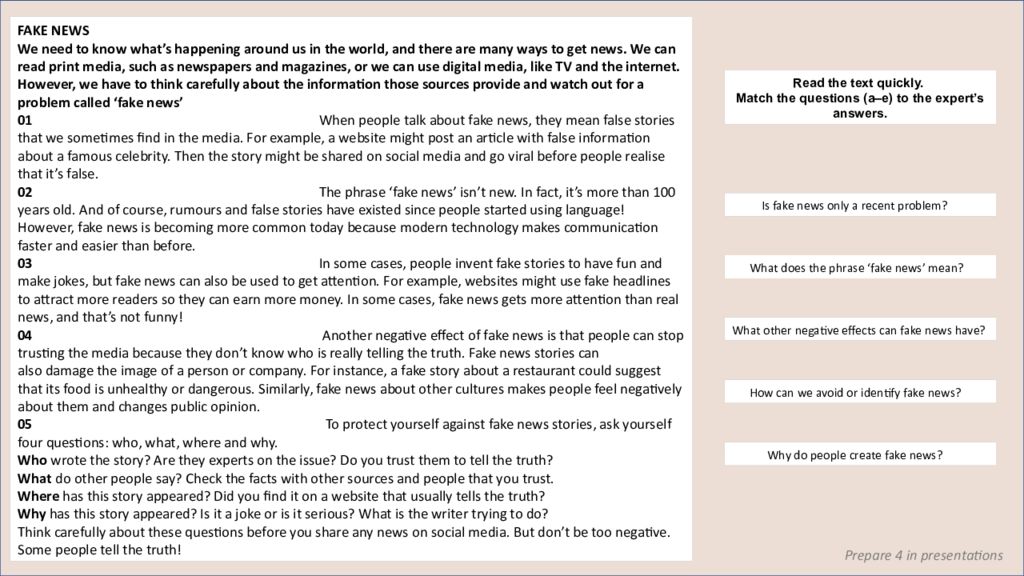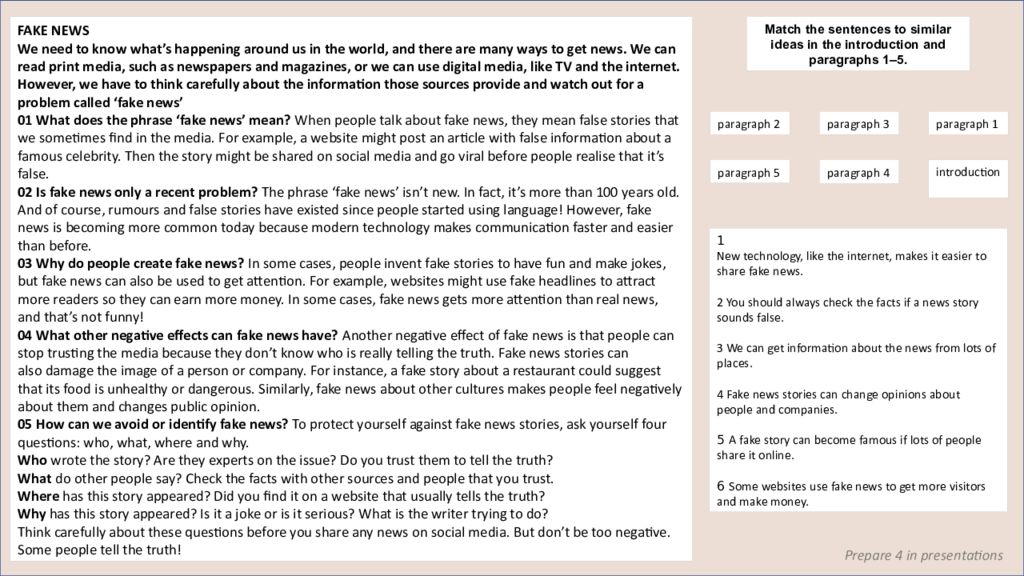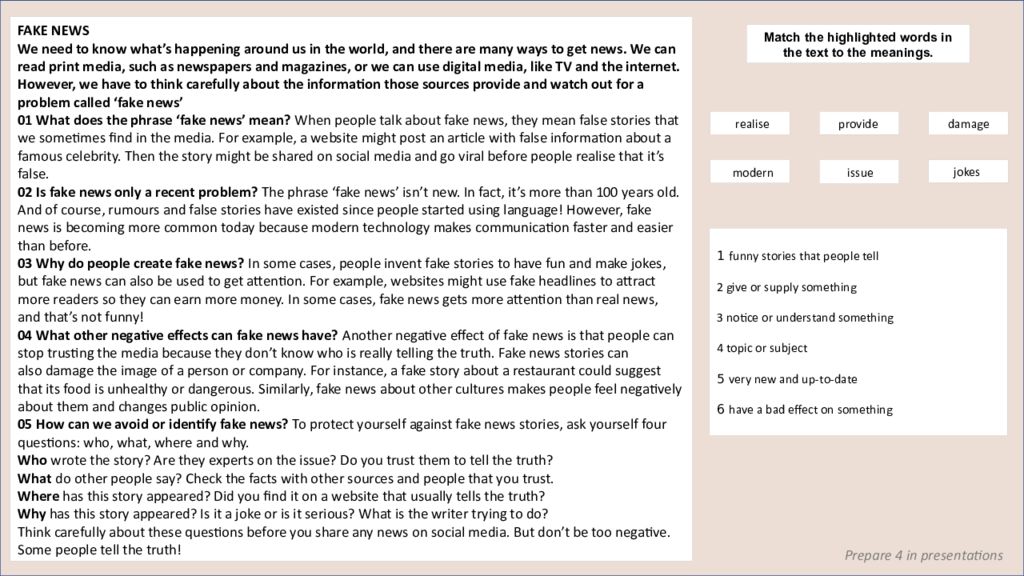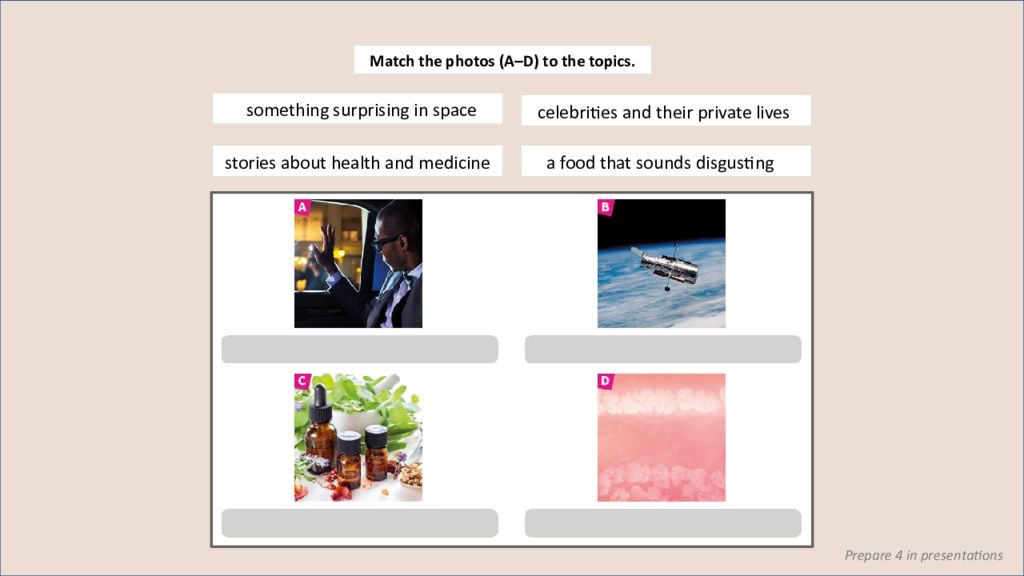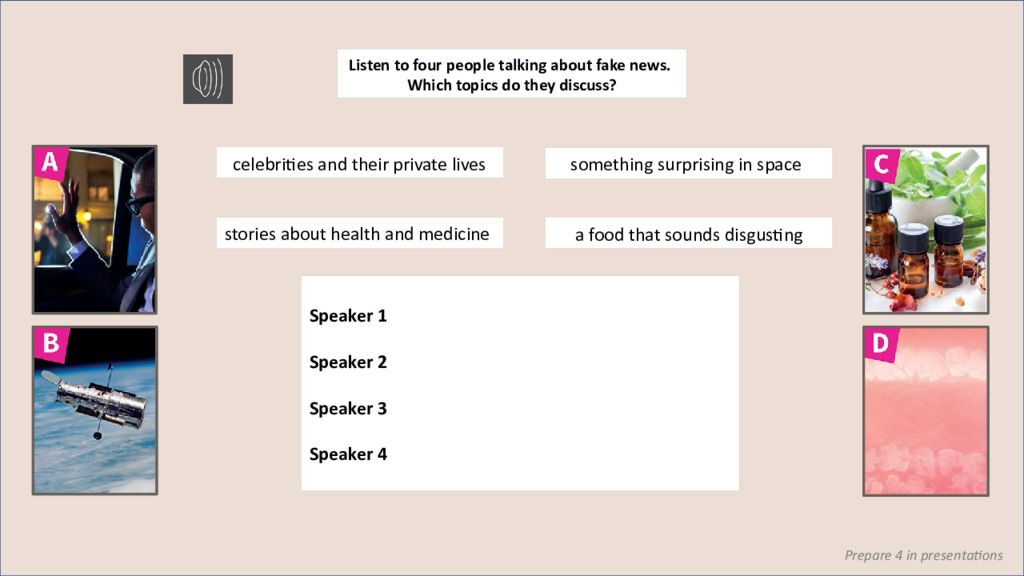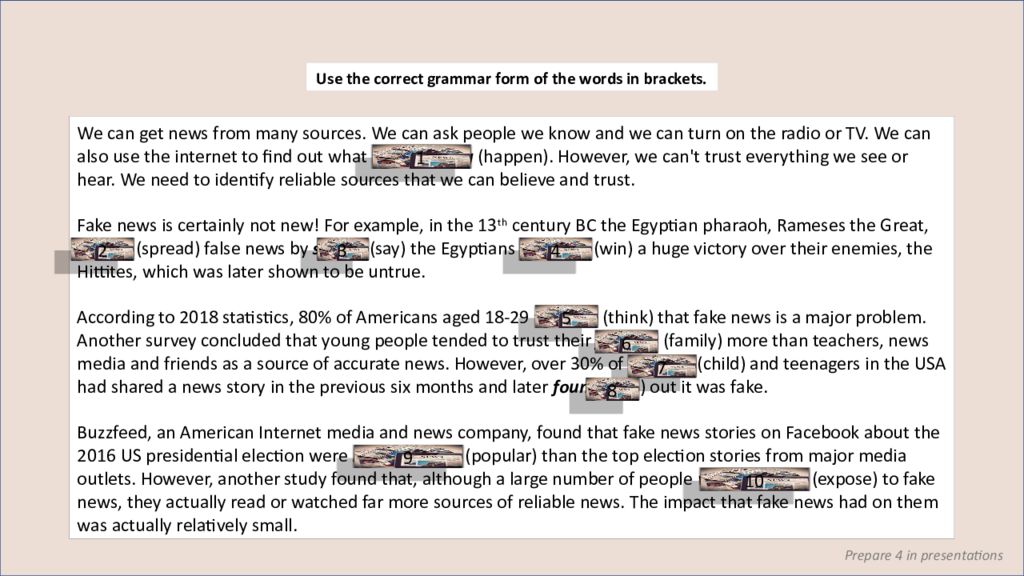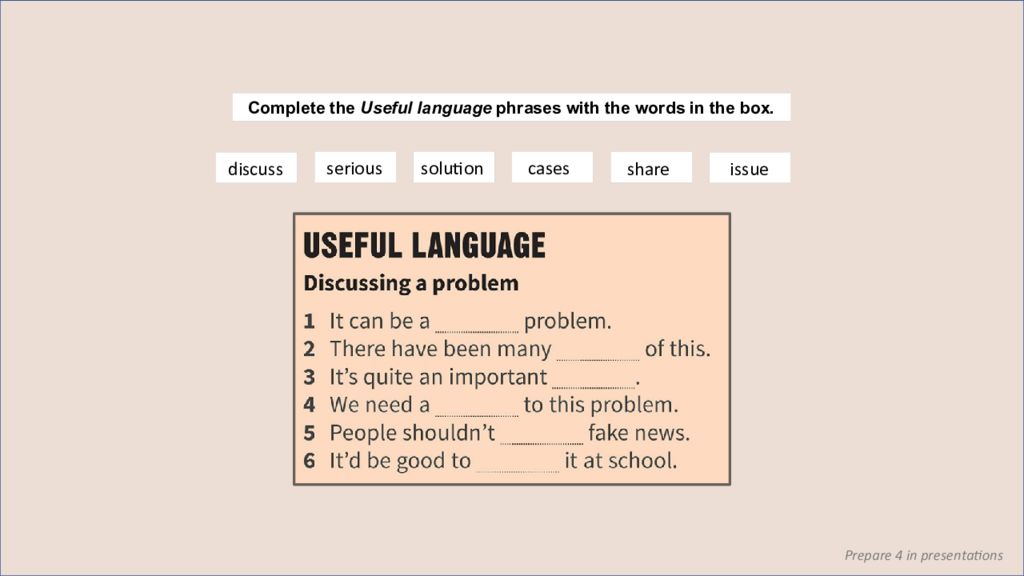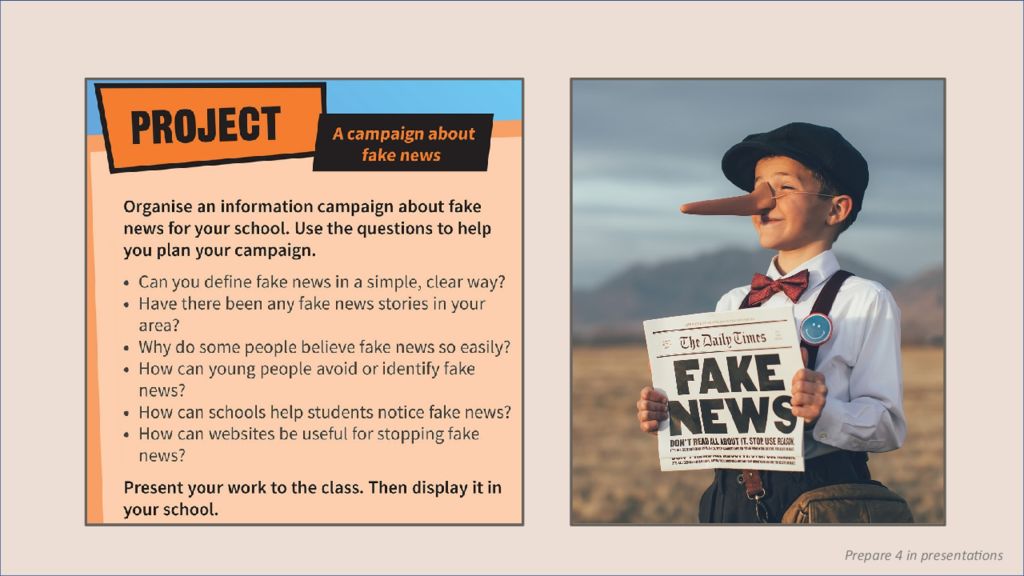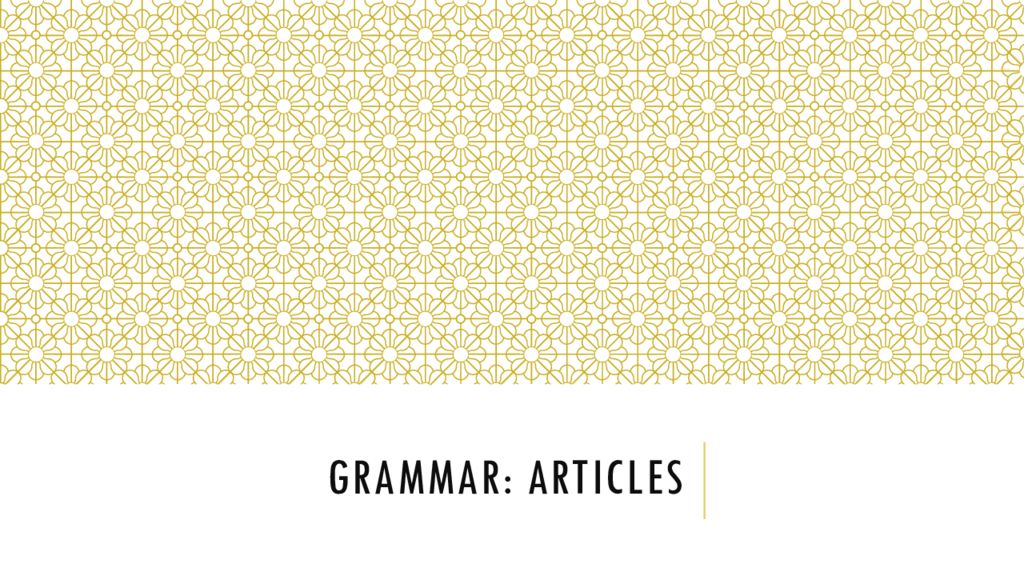Первый слайд презентации
Prepare 4 in presentations LIFE SKILLS Critical Thinking IDENTIFYING RELIABLE NEWS
Слайд 2
Prepare 4 in presentations 1. Have you read any news stories in the past week? What were they about? 2. Why did you choose to read those news stories? (You were interested in the topic. / There was a catchy headline. / You noticed an interesting photo. / … 3. Are there any topics that you never read about? Why?
Слайд 3
Prepare 4 in presentations What sources of information help you stay up to date? my parents teachers and other adults my friends at school newspapers and magazines news on the radio or TV internet websites and apps other sources Which sources of information above do you believe the most? Why do you think they are better than other sources?
Слайд 4
Prepare 4 in presentations Read the text quickly. Match the questions (a–e) to the expert’s answers. FAKE NEWS We need to know what’s happening around us in the world, and there are many ways to get news. We can read print media, such as newspapers and magazines, or we can use digital media, like TV and the internet. However, we have to think carefully about the information those sources provide and watch out for a problem called ‘fake news’ 01 When people talk about fake news, they mean false stories that we sometimes find in the media. For example, a website might post an article with false information about a famous celebrity. Then the story might be shared on social media and go viral before people realise that it’s false. 02 The phrase ‘fake news’ isn’t new. In fact, it’s more than 100 years old. And of course, rumours and false stories have existed since people started using language! However, fake news is becoming more common today because modern technology makes communication faster and easier than before. 03 In some cases, people invent fake stories to have fun and make jokes, but fake news can also be used to get attention. For example, websites might use fake headlines to attract more readers so they can earn more money. In some cases, fake news gets more attention than real news, and that’s not funny! 04 Another negative effect of fake news is that people can stop trusting the media because they don’t know who is really telling the truth. Fake news stories can also damage the image of a person or company. For instance, a fake story about a restaurant could suggest that its food is unhealthy or dangerous. Similarly, fake news about other cultures makes people feel negatively about them and changes public opinion. 05 To protect yourself against fake news stories, ask yourself four questions: who, what, where and why. Who wrote the story? Are they experts on the issue? Do you trust them to tell the truth? What do other people say? Check the facts with other sources and people that you trust. Where has this story appeared? Did you find it on a website that usually tells the truth? Why has this story appeared? Is it a joke or is it serious? What is the writer trying to do? Think carefully about these questions before you share any news on social media. But don’t be too negative. Some people tell the truth! Is fake news only a recent problem? What does the phrase ‘fake news’ mean? What other negative effects can fake news have? How can we avoid or identify fake news? Why do people create fake news?
Слайд 5
Prepare 4 in presentations Match the sentences to similar ideas in the introduction and paragraphs 1–5. FAKE NEWS We need to know what’s happening around us in the world, and there are many ways to get news. We can read print media, such as newspapers and magazines, or we can use digital media, like TV and the internet. However, we have to think carefully about the information those sources provide and watch out for a problem called ‘fake news’ 01 What does the phrase ‘fake news’ mean? When people talk about fake news, they mean false stories that we sometimes find in the media. For example, a website might post an article with false information about a famous celebrity. Then the story might be shared on social media and go viral before people realise that it’s false. 02 Is fake news only a recent problem? The phrase ‘fake news’ isn’t new. In fact, it’s more than 100 years old. And of course, rumours and false stories have existed since people started using language! However, fake news is becoming more common today because modern technology makes communication faster and easier than before. 03 Why do people create fake news? In some cases, people invent fake stories to have fun and make jokes, but fake news can also be used to get attention. For example, websites might use fake headlines to attract more readers so they can earn more money. In some cases, fake news gets more attention than real news, and that’s not funny! 04 What other negative effects can fake news have? Another negative effect of fake news is that people can stop trusting the media because they don’t know who is really telling the truth. Fake news stories can also damage the image of a person or company. For instance, a fake story about a restaurant could suggest that its food is unhealthy or dangerous. Similarly, fake news about other cultures makes people feel negatively about them and changes public opinion. 05 How can we avoid or identify fake news? To protect yourself against fake news stories, ask yourself four questions: who, what, where and why. Who wrote the story? Are they experts on the issue? Do you trust them to tell the truth? What do other people say? Check the facts with other sources and people that you trust. Where has this story appeared? Did you find it on a website that usually tells the truth? Why has this story appeared? Is it a joke or is it serious? What is the writer trying to do? Think carefully about these questions before you share any news on social media. But don’t be too negative. Some people tell the truth! 1 New technology, like the internet, makes it easier to share fake news. 2 You should always check the facts if a news story sounds false. 3 We can get information about the news from lots of places. 4 Fake news stories can change opinions about people and companies. 5 A fake story can become famous if lots of people share it online. 6 Some websites use fake news to get more visitors and make money. paragraph 2 paragraph 3 paragraph 1 paragraph 4 introduction paragraph 5
Слайд 6
Prepare 4 in presentations Match the highlighted words in the text to the meanings. FAKE NEWS We need to know what’s happening around us in the world, and there are many ways to get news. We can read print media, such as newspapers and magazines, or we can use digital media, like TV and the internet. However, we have to think carefully about the information those sources provide and watch out for a problem called ‘fake news’ 01 What does the phrase ‘fake news’ mean? When people talk about fake news, they mean false stories that we sometimes find in the media. For example, a website might post an article with false information about a famous celebrity. Then the story might be shared on social media and go viral before people realise that it’s false. 02 Is fake news only a recent problem? The phrase ‘fake news’ isn’t new. In fact, it’s more than 100 years old. And of course, rumours and false stories have existed since people started using language! However, fake news is becoming more common today because modern technology makes communication faster and easier than before. 03 Why do people create fake news? In some cases, people invent fake stories to have fun and make jokes, but fake news can also be used to get attention. For example, websites might use fake headlines to attract more readers so they can earn more money. In some cases, fake news gets more attention than real news, and that’s not funny! 04 What other negative effects can fake news have? Another negative effect of fake news is that people can stop trusting the media because they don’t know who is really telling the truth. Fake news stories can also damage the image of a person or company. For instance, a fake story about a restaurant could suggest that its food is unhealthy or dangerous. Similarly, fake news about other cultures makes people feel negatively about them and changes public opinion. 05 How can we avoid or identify fake news? To protect yourself against fake news stories, ask yourself four questions: who, what, where and why. Who wrote the story? Are they experts on the issue ? Do you trust them to tell the truth? What do other people say? Check the facts with other sources and people that you trust. Where has this story appeared? Did you find it on a website that usually tells the truth? Why has this story appeared? Is it a joke or is it serious? What is the writer trying to do? Think carefully about these questions before you share any news on social media. But don’t be too negative. Some people tell the truth! 1 funny stories that people tell 2 give or supply something 3 notice or understand something 4 topic or subject 5 very new and up-to-date 6 have a bad effect on something realise provide damage issue jokes modern
Слайд 7
Prepare 4 in presentations Match the photos (A–D) to the topics. stories about health and medicine celebrities and their private lives a food that sounds disgusting something surprising in space
Слайд 8
Prepare 4 in presentations Speaker 1 Speaker 2 Speaker 3 Speaker 4 Listen to four people talking about fake news. Which topics do they discuss? celebrities and their private lives stories about health and medicine a food that sounds disgusting something surprising in space
Слайд 9
Prepare 4 in presentations We can get news from many sources. We can ask people we know and we can turn on the radio or TV. We can also use the internet to find out what is happening ( happen ). However, we can't trust everything we see or hear. We need to identify reliable sources that we can believe and trust. Fake news is certainly not new! For example, in the 13 th century BC the Egyptian pharaoh, Rameses the Great, spread ( spread ) false news by saying ( say ) the Egyptians had won ( win ) a huge victory over their enemies, the Hittites, which was later shown to be untrue. According to 2018 statistics, 80% of Americans aged 18-29 thought ( think ) that fake news is a major problem. Another survey concluded that young people tended to trust their families ( family ) more than teachers, news media and friends as a source of accurate news. However, over 30% of children ( child ) and teenagers in the USA had shared a news story in the previous six months and later found (find) out it was fake. Buzzfeed, an American Internet media and news company, found that fake news stories on Facebook about the 2016 US presidential election were more popular ( popular ) than the top election stories from major media outlets. However, another study found that, although a large number of people were exposed ( expose ) to fake news, they actually read or watched far more sources of reliable news. The impact that fake news had on them was actually relatively small. Use the correct grammar form of the words in brackets. 1 2 3 4 5 6 7 8 9 10
Слайд 10
Prepare 4 in presentations Complete the Useful language phrases with the words in the box. discuss share serious solution cases issue
